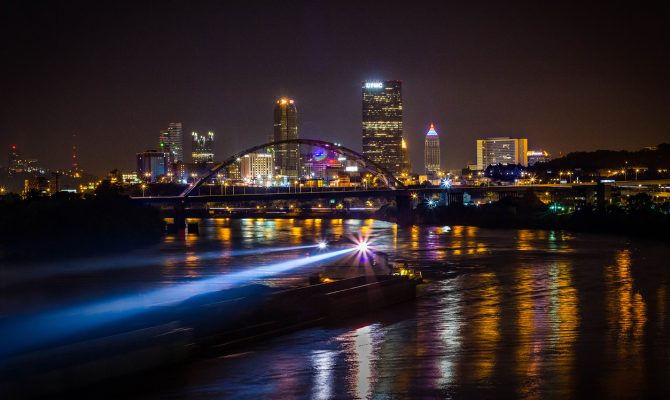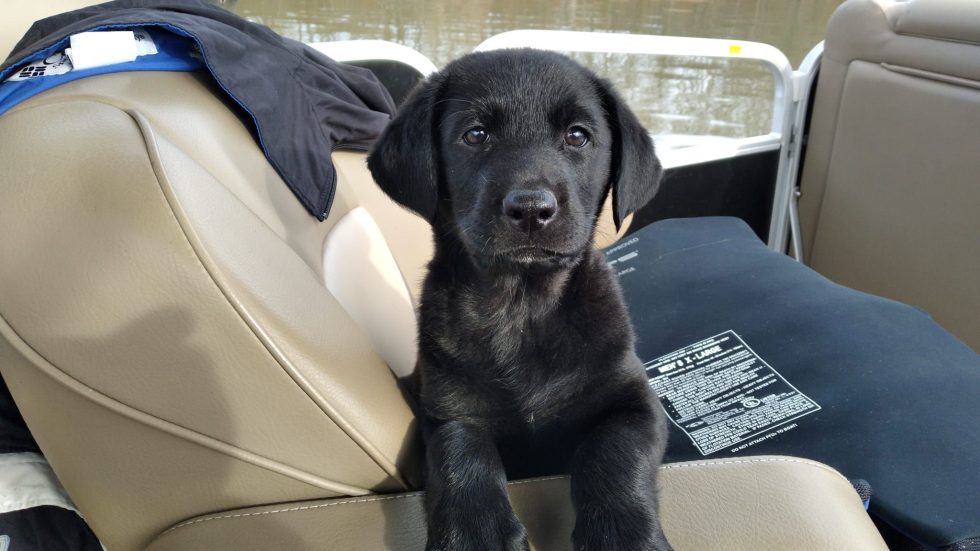Know your signals
- There are two amber lights at the stern of the towboat in a vertical line. There is also an amber light at the center of the tow that will flash at night to create a visual reference of the bow while approaching. Keep in mind that there may be up to 1,300 feet of the barges and vessel remaining as you trackback from that point.
- Quite often, a towboat will place a searchlight on any cruiser nearby. This is usually temporary to create awareness; however — if the searchlight remains on your vessel for a longer period of time — that is a signal to move your craft out of harm’s way as soon as possible.
- When approaching a bend, a tow will often utilize whistle signals to communicate the intention of the Captain. One whistle means the Captain will pass your boat on the port side. Two whistles mean the Captain will pass your boat on the starboard side. Tows running upriver tend to stay on the inside of the bend while tows running down river favor the deeper and faster channels on the outside of the bend.
- Stay tuned in to the right radio frequency. Tows will utilize these channels to communicate.
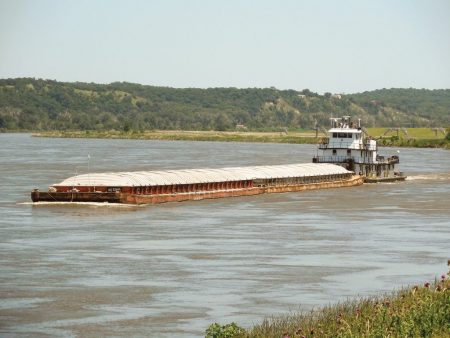
Coming around a bend
Stay out of the wake and out of the way
- Towboats utilize props that can be up to nine feet in diameter. This causes a powerful wake and suction that needs to be avoided at all costs — with even the larger cruisers and houseboats risking lack of maneuverability in these zones.
- Even idle tows and moored barges can still be dangerous. Make sure to still communicate with these vessels — whether approaching downbound or upbound.
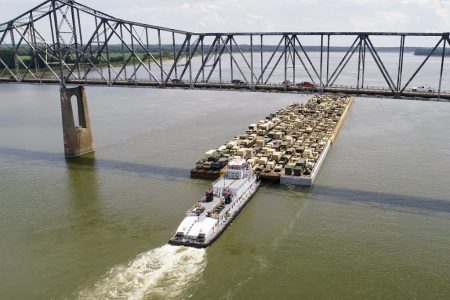
Towboat wake
The Last Chance Line & Emergency Aid
- Not all barges will have this, but it is becoming more common as a last-minute safety device. Along the bow, you may see a line attached from the port side to the starboard side that dips close to the water. This is known as “the last chance line” and can be vital to saving individuals overboard in front of the tow. As tows have a significant blind spot and can take up to a mile to come to a complete stop, this is a crucial life-saving device for boaters with stalled engines or skiers that have fallen in front of barge traffic.
- As barges operate routes frequently on designated waterways, they have the ability to respond quickly to boaters in distress. If you find yourself needing rescue — and a commercial vessel is nearby — towboats may be one of your best chances for a speedy and skilled response. Don’t hesitate to send out a distress signal, as captains & deckhands are trained to provide emergency aid.
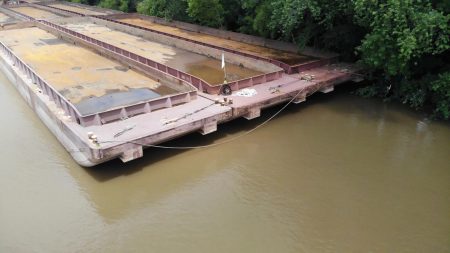
Last chance line

